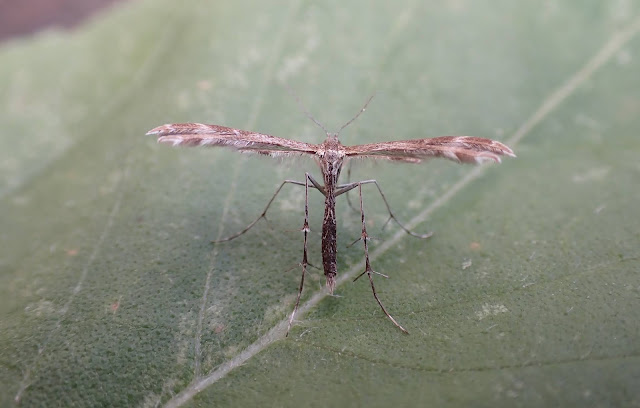A couple of quiet catches recently haven't produced anything unexpected so a return of three new moths for the garden was a pleasant surprise. This was just reward for braving the early morning downpours that necessitated a move of the trap to the car port.
The best moth was a Breckland Plume, a nationally scarce b species that is rarely recorded in the County; although there is has been at least one previous record this year. As it name suggests it is resident in the Brecks in addition to parts of coastal Norfolk and Suffolk.
 |
| Breckland Plume Oxyptilus distans |
One of the key features is the lack of dusky fringe markings on the final forewing lobe, which distinguishes it from the similar but even rarer O. laetus:
A late Spilonota tortrix caught my attention in being slim and with a suffusion of grey scale markings. These are all good features of S. laricana (Larch-bud Moth). This species was previously thought to be a variation within S. ocellana (Bud Moth) which commonly occurs here in mid-summer.
 |
| Spilonota laricana |
The final new moth for the garden involved two Deep-brown Dart. This species turned up twice at Corbett Street prior to 2015.
 |
| Deep-brown Dart Aporophyla lutulenta |
[618] Breckland Plume
[619] Spilonota laricana
[620] Deep-brown Dart

















